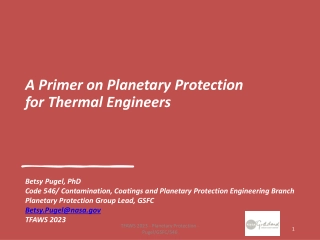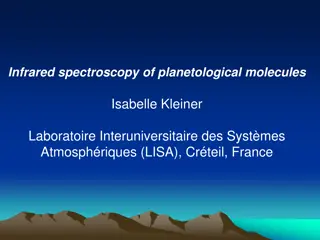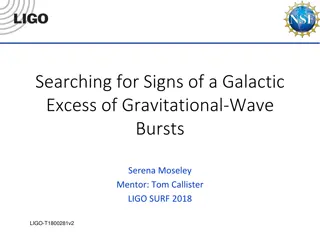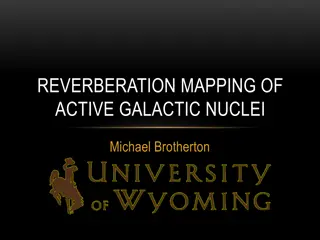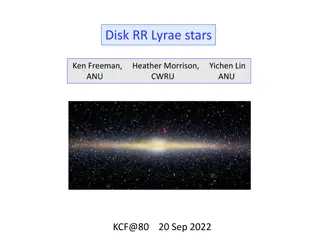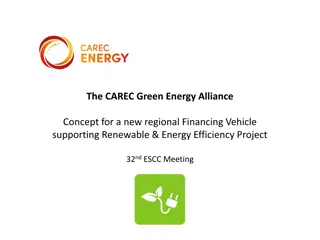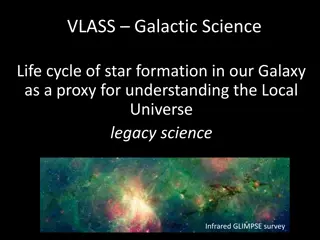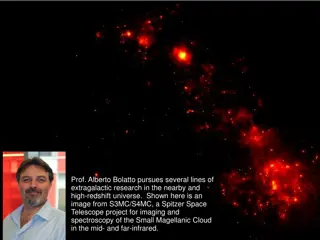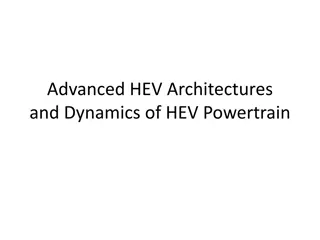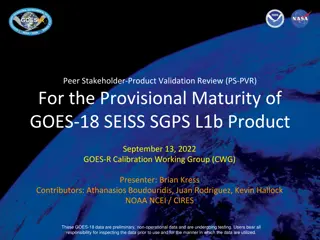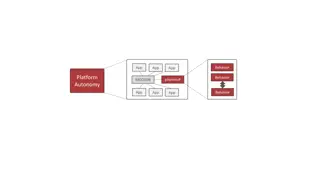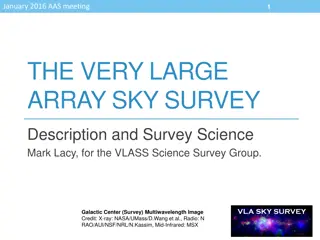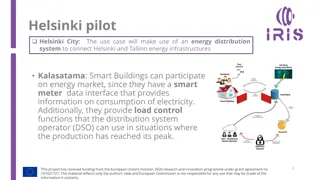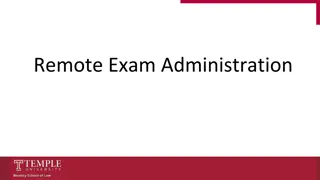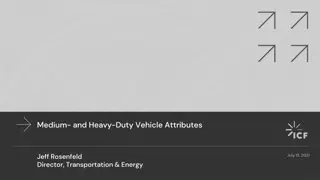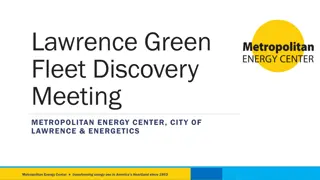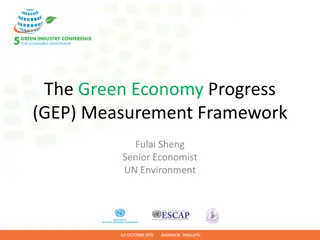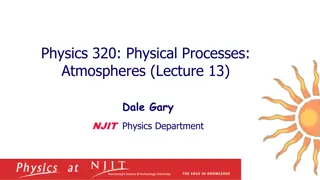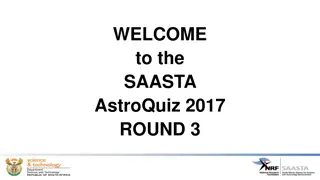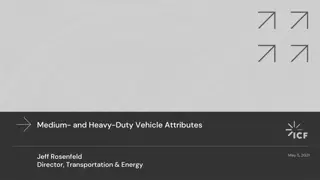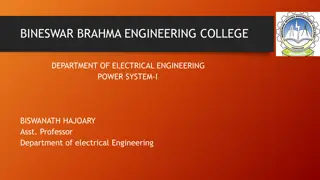Galactic Alliance Mission: Advanced Energy Vehicle for Remote Planetary Operations
Team F presents their Advanced Energy Vehicle project for the Galactic Alliance's mission to transport R2D2 units on remote planets efficiently. The project focuses on energy management, operational efficiency, and consistency while overcoming challenges like limited power supply. Learn about the team members, design motivations, mission objectives, and past lab experiences in this futuristic engineering endeavor.
Download Presentation

Please find below an Image/Link to download the presentation.
The content on the website is provided AS IS for your information and personal use only. It may not be sold, licensed, or shared on other websites without obtaining consent from the author. Download presentation by click this link. If you encounter any issues during the download, it is possible that the publisher has removed the file from their server.
E N D
Presentation Transcript
PDR Oral Presentation Group F Asad Idris Kaixin Luo Manan Kedia
Overview The Team The motivations for preliminary designs What we learned Future plans and goals Conclusion 2
Meet The Team Asad Idris Future MECHANICAL ENGINEER Uses knowledge in mechanics of body as the core for his design ideas. Over-looking all parts of the project Kaixin Luo- Future COMPUTER ENGINEER Uses knowledge in computer science to help code and design AEV in solidworks Manan Kedia- Future COMPUTER SCIENCE ENGINEER Helps write code for the AEV Honorable mention Shreyas Deojoede (former member) Helped design and test AEV prototypes and contributed to design decisions. 3
Mission Concept Review Background The galactic empire is rebuilding their army after the destruction of the Death Star. The rebel alliance needs to prepare for war on remote planets to ensure that the galactic empire is unaware of operations. Due to being on remote planets, power is very limited. The alliance is looking for a monorail network system to transport their R2D2 units which are constructed on one side of the land to where the interceptor aircrafts are being assembled through the means of a green, energy efficient, and cost effective system. The need for an energy efficient system, like an Advance Energy Vehicle (AEV), is due to the base being located on a remote planet where power is a luxury. Mission Objectives Our AEVs will focus on energy management, operational efficiency and operational consistency. The goal is to successfully pick up and deliver precious cargo stored on a caboose while meeting the operational requirements, design constraints and minimizing the energy/mass ratio. Our AEV should have operational consistency in which the AEV performs consistently regardless of type of cargo (cargo should not fall off track) or power supplies (battery). 4
Motivation for designs This design was drafted by Asad, He used his knowledge in mechanics to come up with a design that had a low center of gravity. He hypothesized that this linear design would swing less on turns and thus use less power overall. structure that he said suggested would be more aerodynamic and therefore more efficient This design was drafted by a former team member, Shreyas. A future aerospace engineer, came up with an airplane like 5
What we learned from the past labs The purpose of LAB-0 was to form the teams and the guidelines for the course were laid out. The teams then learned what an AEV is and what all of its components are. This lab set the base of what the upcoming labs would be about. The class also learned about the lab objectives such as design processes and project documentation as well as safety procedures. LAB-01 was the first lab where the team got to play around with some AEV components. We learned how to set up the AEV software and familiarized ourselves with some of the coding. We faced some problems with the coding but realized this was due to the Arduino software being case sensitive. A simple code was created and we learned how the motors responded to the code and the fact that the AEV would continue to coast after the brake command was applied as this only stopped the motors. At this point we started discussing potential design ideas but they just only ideas still. 6
In LAB-02a we learned how to use more hardware components, more specifically the light sensor, which is essentially a photo-resistor. We learned how the sensor picks up periodic reflected light from the specially design wheels as they spin. These reflections are picked up as marks which the on board processors use to measure distance. From this lab we later modified our coding strategies to use marks instead of time to measure distance. We did this by utilizing the motorSpeed & gotoXposition commands rather than the celerate & goFor commands. This made our runs more consistent . The brake and coast strategy provided inconsistent runs and a team member suggested we use the servo which was also introduced to us in this lab. We implemented the servo as a braking mechanism to reliably stop our AEV on our prototypes. 7
LAB-02b- In this part of the 2nd lab we used the wind tunnel as means to evaluate the two different propeller types we were provided each in two different configurations. The wind tunnel provided us raw data which we used to calculate propulsion efficiency and propeller advanced ratio. This helped us decide on a propeller to use for our AEV, and the team decided on the EP-3030 as it provided a good balance of efficiency and thrust. We also got a taste of how similar tests are conducted in the real world which we thought was quite motivating.
LAB-03-This was a creative lab session where each team member was to brainstorm a design for what they think the AEV should look like. We learned techniques to think creatively and how to back our design ideas with sound reasons. The team then collectively evaluated the designs and picked two designs which they thought were best. These designs would later be modified with elements of rejected designs . 9
LAB-04- This lab introduced us to some very important analysis tools. We learned how to gather performance data and use the MATLAB program to calculate many different parameters and most importantly , Total energy. The MATLAB data does all this directly but we also learned how to do all the calculations by ourselves which helped us understand more what the results meant. The phase diagram was a useful tool to see where the AEV used how much energy and there where it needed to be tweaked, either in code or in design. This tool helped us modify our prototypes to use lesser energy overall.
LAB-05- In this lab we used a structured screening and scoring method to effectively evaluate our design concepts . The Sample AEV was used as a reference and our designs were compared to it. The team managed to compare 3 design ideas and which had important elements and needed to be developed rather than discarded , we learned that no idea is worthless . This screening and scoring technique could also be used outside of this class to help make decisions as applying weight to each criteria helps breakdown what would be better overall in a more effective way. Eg, which car to buy. 11
Future Goals The next step in the development of our AEV is to make a decision between our proposed choices of prototypes for what the final design should look like and run tests on it. Decide whether or not we need any parts 3D printed/ laser cut and work on designing the part if need be. Polish and tweak the code to run using the least energy possible while still completing the mission, which is our key objective. Refine our servo braking mechanism. 12
Conclusions This course, although fun and engaging, is like no other course we ve taken. It tests all parts of what an ideal student should be. Creative thinking, application of knowledge to real world situations, the importance of teamwork and communication and how to handle a difficult situations. 13
Questions? 14



